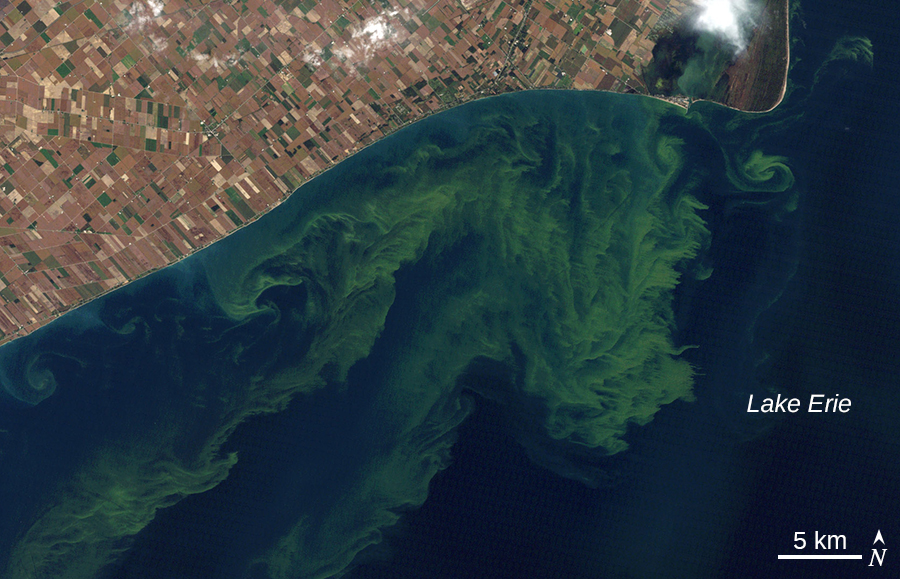| << Chapter < Page | Chapter >> Page > |
Macromolecules in thermophiles and hyperthermophiles show some notable structural differences from what is observed in the mesophiles. The ratio of saturated to polyunsaturated lipids increases to limit the fluidity of the cell membranes. Their DNA sequences show a higher proportion of guanine–cytosine nitrogenous bases, which are held together by three hydrogen bonds in contrast to adenine and thymine, which are connected in the double helix by two hydrogen bonds. Additional secondary ionic and covalent bonds, as well as the replacement of key amino acids to stabilize folding, contribute to the resistance of proteins to denaturation. The so-called thermoenzymes purified from thermophiles have important practical applications. For example, amplification of nucleic acids in the polymerase chain reaction (PCR) depends on the thermal stability of Taq polymerase , an enzyme isolated from T. aquaticus . Degradation enzymes from thermophiles are added as ingredients in hot-water detergents, increasing their effectiveness.
Artificial fertilizers have become an important tool in food production around the world. They are responsible for many of the gains of the so-called green revolution of the 20th century, which has allowed the planet to feed many of its more than 7 billion people. Artificial fertilizers provide nitrogen and phosphorus, key limiting nutrients, to crop plants, removing the normal barriers that would otherwise limit the rate of growth. Thus, fertilized crops grow much faster, and farms that use fertilizer produce higher crop yields.
However, careless use and overuse of artificial fertilizers have been demonstrated to have significant negative impacts on aquatic ecosystems, both freshwater and marine. Fertilizers that are applied at inappropriate times or in too-large quantities allow nitrogen and phosphorus compounds to escape use by crop plants and enter drainage systems. Inappropriate use of fertilizers in residential settings can also contribute to nutrient loads, which find their way to lakes and coastal marine ecosystems. As water warms and nutrients are plentiful, microscopic algae bloom, often changing the color of the water because of the high cell density.
Most algal blooms are not directly harmful to humans or wildlife; however, they can cause harm indirectly. As the algal population expands and then dies, it provides a large increase in organic matter to the bacteria that live in deep water. With this large supply of nutrients, the population of nonphotosynthetic microorganisms explodes, consuming available oxygen and creating “ dead zone s” where animal life has virtually disappeared.
Depletion of oxygen in the water is not the only damaging consequence of some algal blooms. The algae that produce red tides in the Gulf of Mexico, Karenia brevis , secrete potent toxins that can kill fish and other organisms and also accumulate in shellfish. Consumption of contaminated shellfish can cause severe neurological and gastrointestinal symptoms in humans. Shellfish beds must be regularly monitored for the presence of the toxins, and harvests are often shut down when it is present, incurring economic costs to the fishery. Cyanobacteria, which can form blooms in marine and freshwater ecosystems, produce toxins called microcystins , which can cause allergic reactions and liver damage when ingested in drinking water or during swimming. Recurring cyanobacterial algal blooms in Lake Erie ( [link] ) have forced municipalities to issue drinking water bans for days at a time because of unacceptable toxin levels.
This is just a small sampling of the negative consequences of algal blooms, red tides, and dead zones. Yet the benefits of crop fertilizer—the main cause of such blooms—are difficult to dispute. There is no easy solution to this dilemma, as a ban on fertilizers is not politically or economically feasible. In lieu of this, we must advocate for responsible use and regulation in agricultural and residential contexts, as well as the restoration of wetlands, which can absorb excess fertilizers before they reach lakes and oceans.

Match the type of bacterium with its environment. Each choice may be used once, more than once, or not at all. Put the appropriate letter beside the environment.
| ___psychotroph | A. water heater set at 50 °C |
| ___mesophile | B. hydrothermal vent |
| ___thermophile | C. deep ocean waters |
| ___hyperthermophile | D. human pathogen |
| ___psychrophile | E. soil bacteria in temperate forest |
C, D, E, B, A
How are hyperthermophile’s proteins adapted to the high temperatures of their environment?
Why would NASA be funding microbiology research in Antarctica?

Notification Switch
Would you like to follow the 'Microbiology' conversation and receive update notifications?